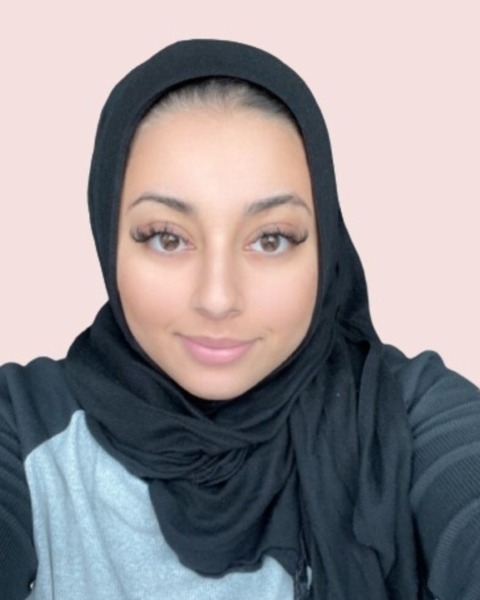Back
Obesity
Category: Abstract Submission
Obesity I
513 - Pupillary Light Response in Rapid-onset Obesity with Hypothalamic dysfunction, Hypoventilation, and Autonomic Dysregulation (ROHHAD) Compared to Overweight/Obese and Normal Weight Controls
Saturday, April 23, 2022
3:30 PM – 6:00 PM US MT
Poster Number: 513
Publication Number: 513.238
Publication Number: 513.238
Allaa Fadl-Alla, Ann & Robert H. Lurie Children's Hospital of Chicago, Chicago, IL, United States; Allaa Fadl-Alla, Ann & Robert H. Lurie Children's Hospital of Chicago, Chicago, IL, United States; Molly Winston, Northwestern University The Feinberg School of Medicine, Chicago, IL, United States; Casey Rand, Ann & Robert H. Lurie Children's Hospital of Chicago, chicago, IL, United States; Tracey Stewart, Lurie Children's Hospital, Chicago, IL, United States; Debra E. Weese-Mayer, Ann & Robert H. Lurie Children's Hospital of Chicago, Chicago, IL, United States

Allaa Fadl-Alla, BS
Clinical Research Coordinator 2
Ann & Robert H. Lurie Children's Hospital of Chicago
Chicago, Illinois, United States
Presenting Author(s)
Background: We previously identified altered pupillary light response (PLR) measures in patients with Congenital Central Hypoventilation Syndrome (CCHS) as sensitive biomarkers of autonomic (dys)function. ROHHAD, also a rare pediatric autonomic disorder, typically presents between 1.5-7 years of age with rapid weight gain followed by altered respiratory control with hypothalamic and autonomic dysregulation, and risk of cardiorespiratory arrest if diagnosis is delayed. An autonomic biomarker of ROHHAD has potential to expedite diagnosis and introduce life-saving intervention. We hypothesized that PLR would differ in patients with ROHHAD compared to healthy overweight/obese and normal weight controls with advancing age.
Objective: To identify PLR measures that would distinguish patients with ROHHAD.
Design/Methods: PLR measures were obtained from ROHHAD and healthy control participants ages 2-18 years using the NeurOptics PLR-2000 (Irvine, CA). Analyses explored differences in PLR variables (initial and end pupil diameter, percent change (delta), constriction and dilation velocities, and latency) between three groups (ROHHAD patients, NICHD-defined overweight/obese controls, and healthy normal weight controls), by age range (early childhood (2-5 yrs), middle childhood (6-11 yrs), and early adolescence (12-18 yrs)) using a hierarchical linear model and post hoc pairwise comparisons. Follow-up analyses explored group by age interaction effects across PLR variables to determine differences in the developmental trajectory between groups.
Results: 480 PLR sessions were conducted with 17 ROHHAD patients, 104 overweight/obese controls, and 199 normal weight controls. Results revealed differences in developmental trajectory of initial and end pupil diameter, particularly from early to middle childhood, when comparing ROHHAD to normal weight controls (ps < 0.04), but no differences when compared with overweight/obese controls (ps>0.20). Furthermore, development of latency (time from light stimulus to onset of pupillary constriction) from early childhood to middle childhood differed between all three groups (ps < 0.03)(Figure1). Conclusion(s): Maturation of PLR variables, particularly initial and end pupil diameter, may be valuable biomarkers in ROHHAD. However, results are less robust than observed in CCHS, potentially due to weight gain as a key feature of ROHHAD, which also impacts PLR. Nevertheless, latency stands out as a sensitive potential biomarker at ROHHAD onset. Further evaluation in larger cohorts of ROHHAD and variable weight controls is warranted.
Figure 1. Latency from light stimulus to onset of pupillary constriction by age (years) in ROHHAD patients, overweight/obese controls, and normal weight controls.jpg)
Objective: To identify PLR measures that would distinguish patients with ROHHAD.
Design/Methods: PLR measures were obtained from ROHHAD and healthy control participants ages 2-18 years using the NeurOptics PLR-2000 (Irvine, CA). Analyses explored differences in PLR variables (initial and end pupil diameter, percent change (delta), constriction and dilation velocities, and latency) between three groups (ROHHAD patients, NICHD-defined overweight/obese controls, and healthy normal weight controls), by age range (early childhood (2-5 yrs), middle childhood (6-11 yrs), and early adolescence (12-18 yrs)) using a hierarchical linear model and post hoc pairwise comparisons. Follow-up analyses explored group by age interaction effects across PLR variables to determine differences in the developmental trajectory between groups.
Results: 480 PLR sessions were conducted with 17 ROHHAD patients, 104 overweight/obese controls, and 199 normal weight controls. Results revealed differences in developmental trajectory of initial and end pupil diameter, particularly from early to middle childhood, when comparing ROHHAD to normal weight controls (ps < 0.04), but no differences when compared with overweight/obese controls (ps>0.20). Furthermore, development of latency (time from light stimulus to onset of pupillary constriction) from early childhood to middle childhood differed between all three groups (ps < 0.03)(Figure1). Conclusion(s): Maturation of PLR variables, particularly initial and end pupil diameter, may be valuable biomarkers in ROHHAD. However, results are less robust than observed in CCHS, potentially due to weight gain as a key feature of ROHHAD, which also impacts PLR. Nevertheless, latency stands out as a sensitive potential biomarker at ROHHAD onset. Further evaluation in larger cohorts of ROHHAD and variable weight controls is warranted.
Figure 1. Latency from light stimulus to onset of pupillary constriction by age (years) in ROHHAD patients, overweight/obese controls, and normal weight controls
.jpg)
